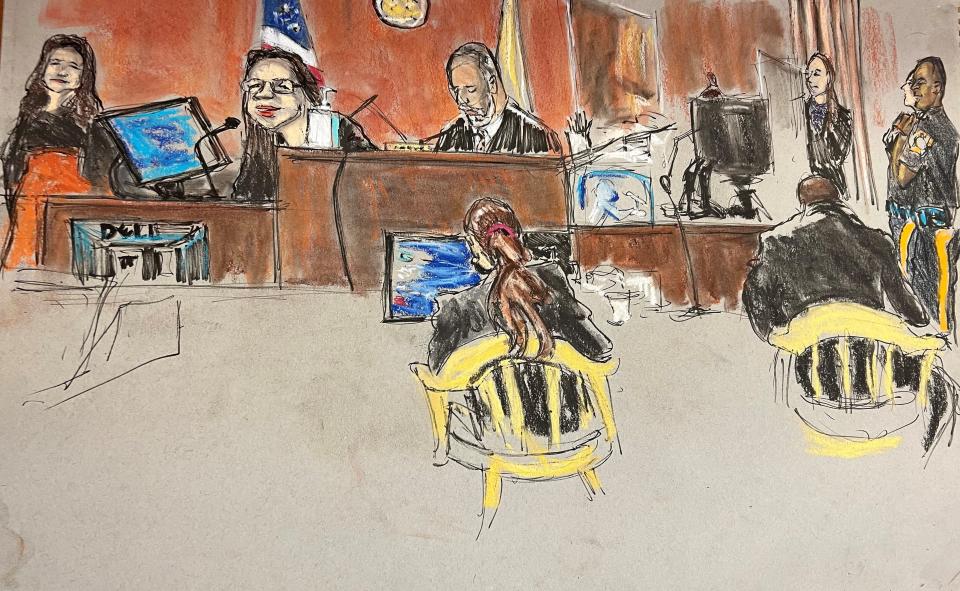Burned debris analysis, DNA part of Randy Manning trial testimony
As the Randy Manning murder trial ends its third week, the jury on Thursday heard from two forensics experts and the re-cross examination of a retired Bergen County Prosecutor's Office detective.
Manning is accused of shooting aspiring rapper Rhian "Kampane" Stoute in 2011 in a vacant home in Englewood and burning the body before driving Stoute's truck with his body in it and leaving it on a quiet Paramus street.
Manning was found guilty in 2014 and sentenced to life in prison, but the conviction was tossed by an appellate court decision that was upheld by the state Supreme Court in 2020.
Forensic DNA scientist Mary Kite testified about the DNA of Manning and Stoute plus DNA found on several items including two Nike Air Jordan sneakers, blood found on the upper part of basement steps at one of the scenes and a swab of sheetrock in the kitchen from one of the scenes.
Previous coverage: Detective details discovery of victim's burned body during Randy Manning murder trial
More: 'Cold-hearted killer' or close friend: Retrial begins to decide Englewood murder case
Kite explained how she processes the DNA and that her work is peer and administratively reviewed. She said Stoute's DNA matched the blood found at one of the scenes.
The second forensic scientist was Melissa Balogh, who works for the New Jersey State Police. Balogh tested several items of evidence for the presence of ignitable liquids, including a pair of socks from Stoute, miscellaneous debris that was removed from Stoute's back, a liquid sample from a sump pump and burnt material.

When analyzing the sump pump material, Balogh said it had a foul smell and a swab dipped in the liquid didn't ignite when tested. She believed there was too much water in the sample to ignite as gasoline is very volatile.
She said the next step would be to use a test that combines the use of gas chromatography and mass spectrometry. Balogh said using that method for the sump pump liquid she was able to determine there was the presence of gasoline.
For the socks, burnt material and miscellaneous debris, Balogh explained they are put in airtight metal containers to prevent any possible ignitable liquids from evaporating and then the containers are heated in order for the vapors to be collected. A gas chromatography shows possible gasoline and the mass spectrometer can conclusively determine gasoline.
Retired Bergen County Prosecutor's Office Deputy Chief Gary Boesch was questioned again on the stand by Manning's attorney, Milagros Camacho. Camacho asked Boesch questions about his previous testimony regarding the interview and interrogation of Manning.
This article originally appeared on NorthJersey.com: DNA, burned items focus of forensic scientists' testimony in Randy Manning trial

